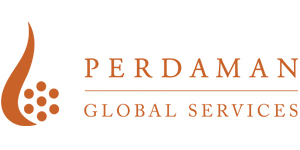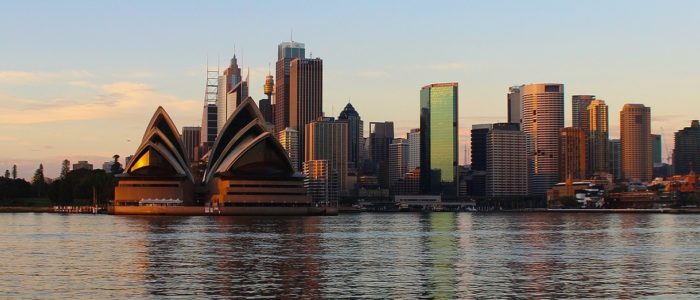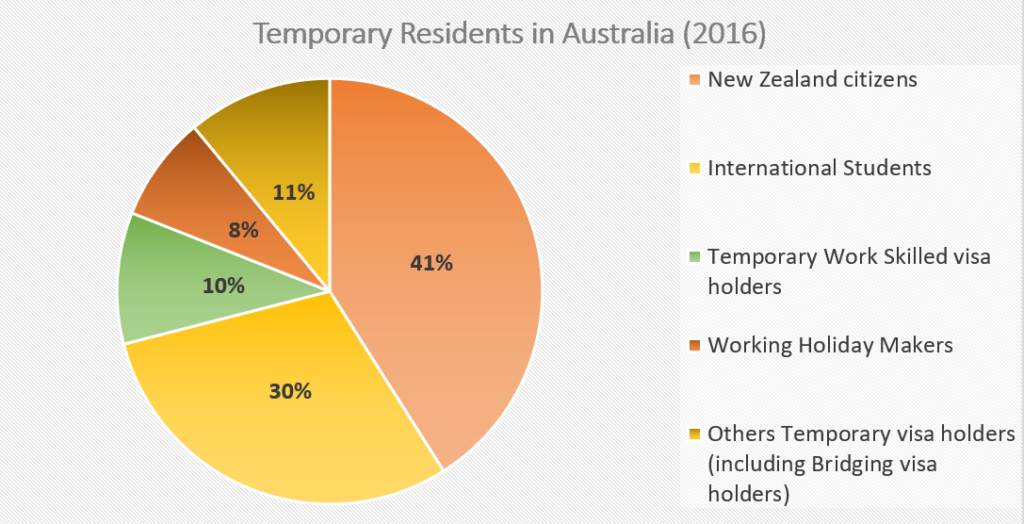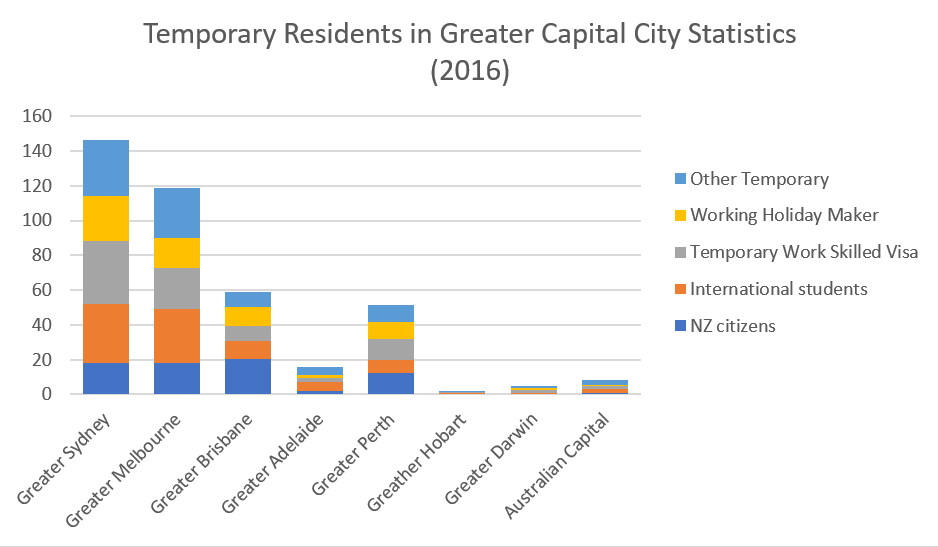The new Australian Bureau of Statistics (ABS) analysis shows that in 2016, half of the 1.5 million temporary residents in Australia were living in Sydney (27 per cent) and Melbourne (24 per cent) with a further 14 per cent calling Brisbane home. ABS Director of Migration Statistics, Myles Burleigh, said for the first time detailed social and economic characteristics of temporary residents in Australia have been made available through the 2016 Australian Census and Temporary Entrants Integrated Dataset (ACTEID).
“For example, what we see in this new data is that in 2016, 81 per cent of temporary residents lived in capital cities, compared with 67 per cent of all Australians. Outside capital cities, the most popular areas were regional Queensland with 10 per cent and regional New South Wales with 4 per cent.
“New Zealand citizens on subclass 444 Special Category visas were the largest group of temporary residents in Australia. They were most likely to live in Brisbane (20 per cent), followed by Melbourne and Sydney (both 18 per cent). Three-quarters (76 per cent) were in the labour force.”
Students were the second largest group of temporary residents (30 per cent) and were most likely to have been born in China (27 per cent) and India (13 per cent). Most lived in Sydney (34 per cent) or Melbourne (31 per cent). The majority of students (68 per cent) studied at universities or other tertiary institutions.
Temporary residents holding skilled work visas were the third largest group with 86 per cent of those aged 15 years and over in the labour force. This group of temporary residents had the highest median weekly personal income at $1,143 per week. They were most likely to have been born in India (20 per cent) and England (12 per cent). In comparison, 84 per cent of working holiday makers aged 15 years and over were in the labour force. They had a median weekly personal income of $648 per week and were predominantly born in South Korea (17 per cent), Taiwan (16 per cent) and England (14 per cent).
Read Media Release







Comments are closed.